Nest Cam vs. WyzeCam: Clash of the connected cameras
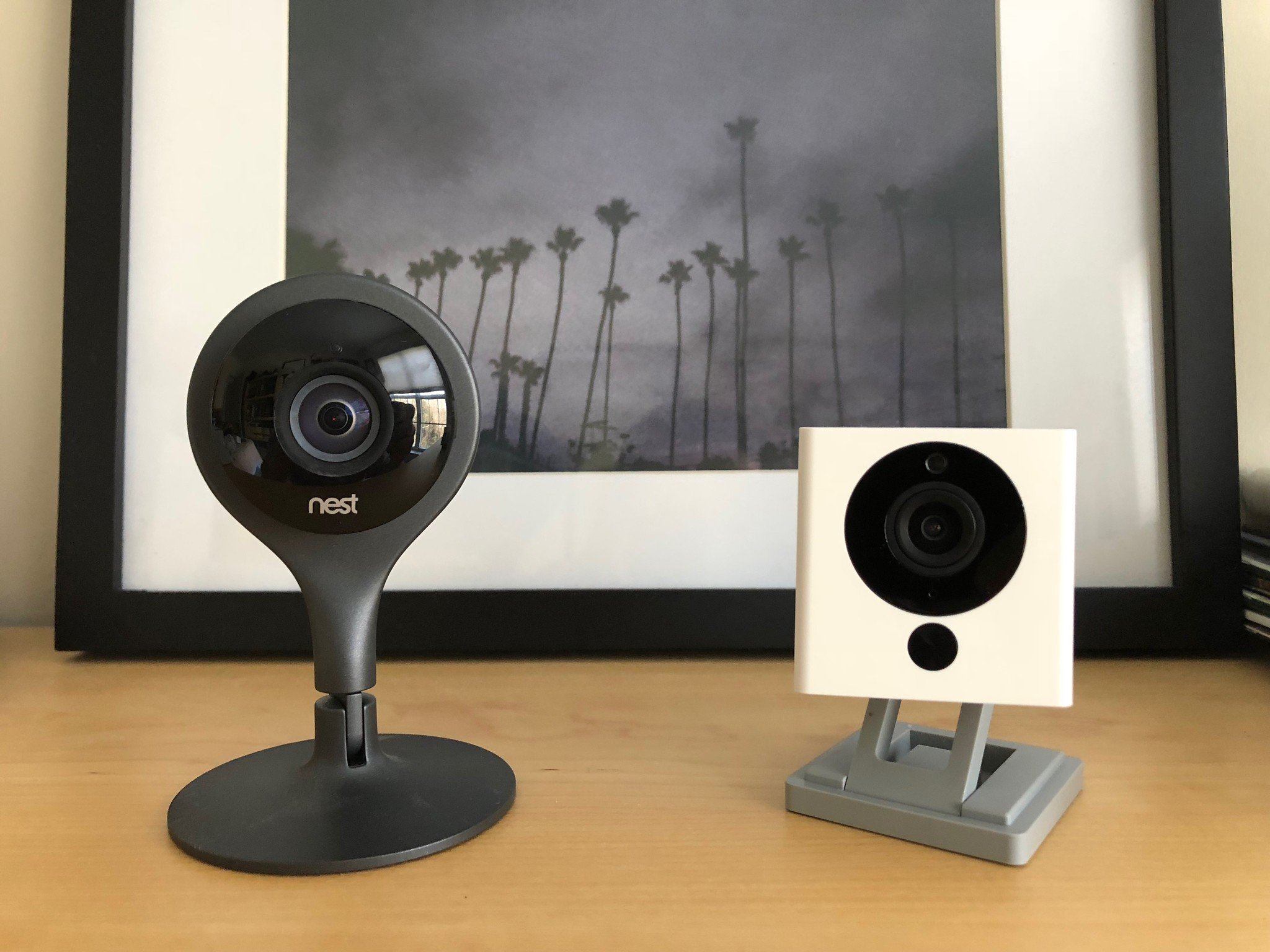
When we needed a baby monitor for our first child, my wife and I splurged on the Nest Cam Indoor ($190), wowed by its high-def imagery, night vision, and two-way audio abilities. When the stork visited a second time, we picked up a WyzeCam v2, bearing similar-looking specs and a seemingly absurd $19.99 price point .
No, that's not a misprint. I didn't omit a zero. The WyzeCam costs just under twenty bucks. (Twenty-five-ish, with shipping.)
In the end, one of these cameras left us with at least a twinge of buyers' remorse. Let's compare them lens-to-lens to help you decide which one might work best for you.
Design and build quality
A somber black mini-lith, the Nest Cam Indoor looks like the product of some illicit, clandestine union between Darth Vader and the HAL 9000. It bends and twists easily enough to position precisely, but with enough resistance to assure you it'll stay put once in place. Its pleasantly hefty magnetic base can attach to an included metal plate that screws into the wall; suboptimal for your drywall, but easy to reposition.
The Nest Cam Indoor includes a generous 10-foot USB cable that plugs somewhat awkwardly into a vertical slot on the bottom of the camera at one end, and a semi-bulky cube-shaped power block at the other. It's not the easiest thing to squeeze behind a bookshelf or cabinet – especially any furniture secured to the wall in anticipation of rambunctious toddlers.
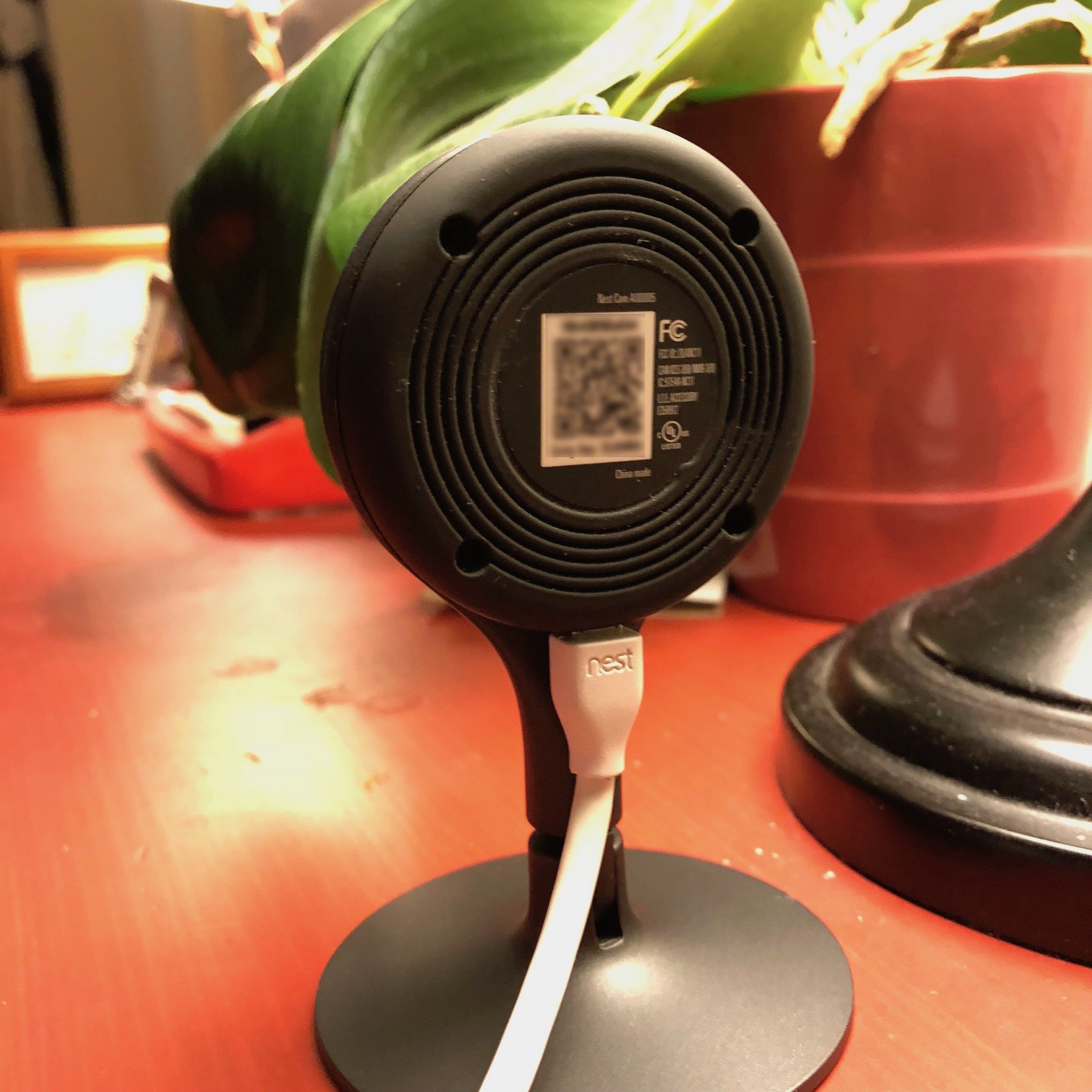
In a pitch-dark room, the Nest Cam's status light can seem obtrusively bright — possibly enough to keep a sleep-resistant kiddo awake. It pulses on and off when someone's watching the feed, which is good to know, but again, gets distracting in a dark room. Luckily, you can shut off the status light in the Nest app.
The WyzeCam, a tiny white cube on an extendable/collapsible magnetic base, recalls Pixar's jumping lamp mascot as redesigned by Aperture Science. (To cut costs, Wyze licensed the exterior design from another company.) It feels light and cheap, and while it does stay put on its own when raised, lowered, or turned as you desire, it's also easy to nudge off course if you accidentally bump into it or move the cord.
Master your iPhone in minutes
iMore offers spot-on advice and guidance from our team of experts, with decades of Apple device experience to lean on. Learn more with iMore!
Its 5-foot USB cord feeds into an even more awkwardly shaped power block, relatively long and horizontal and very hard (but not impossible) to wedge into narrow behind-furniture spaces. You can buy another 5-foot extension cable with the $4 WyzeCam Mounting Kit, which includes a second metal mounting disc and 3M adhesive ring to match the ones packaged with the camera. No screws means the disc won't damage your wall, but also means you'll have to buy another extra adhesive patch if you ever want to move it.
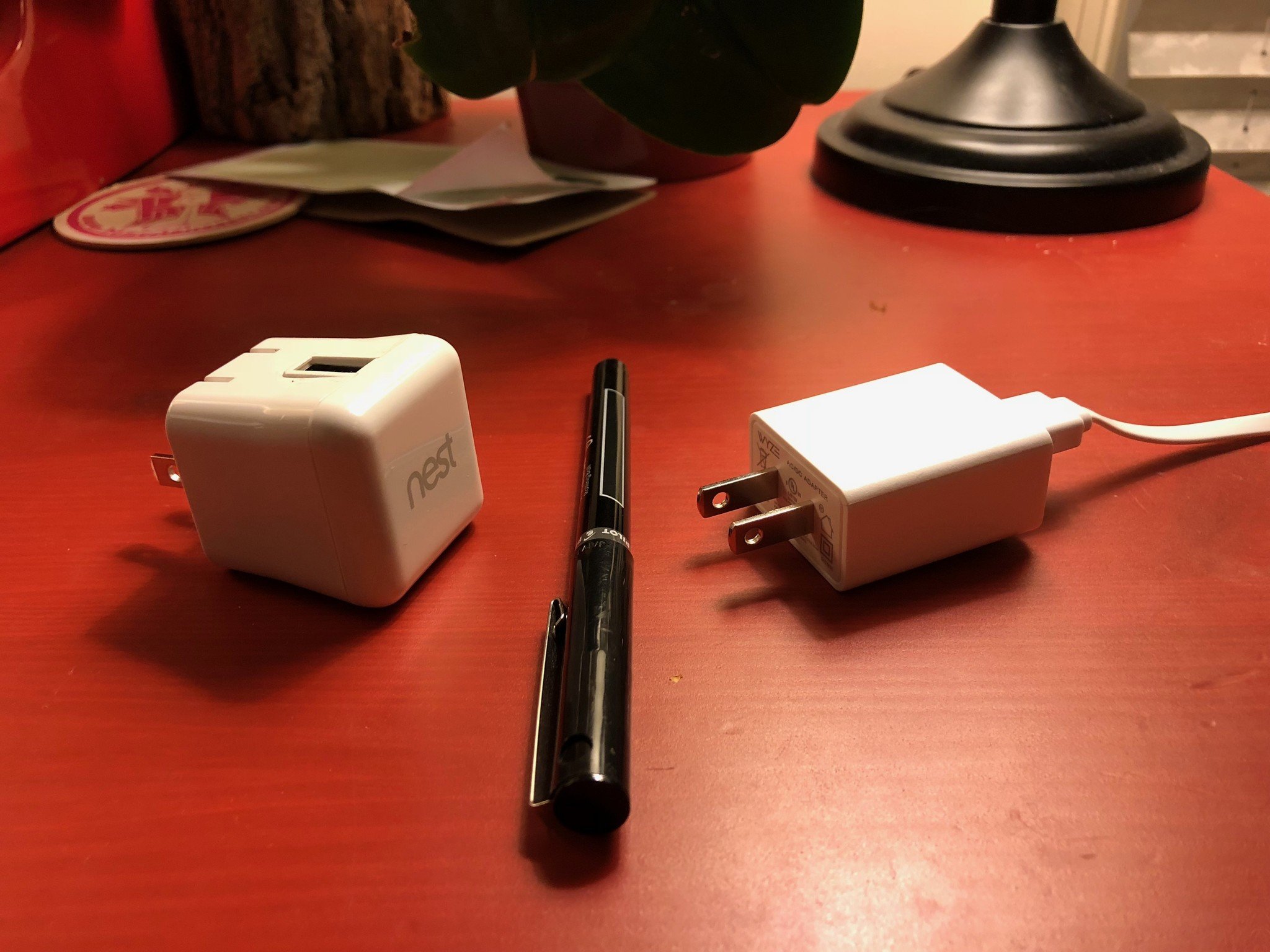
WyzeCam keeps its status light on the back of the camera, projecting a gentle colored light behind it. Like the NestCam, you can turn this off in the app. While you're back there, stop to admire WyzeCam's whimsical air vent holes, shaped like a little house. Awwww.
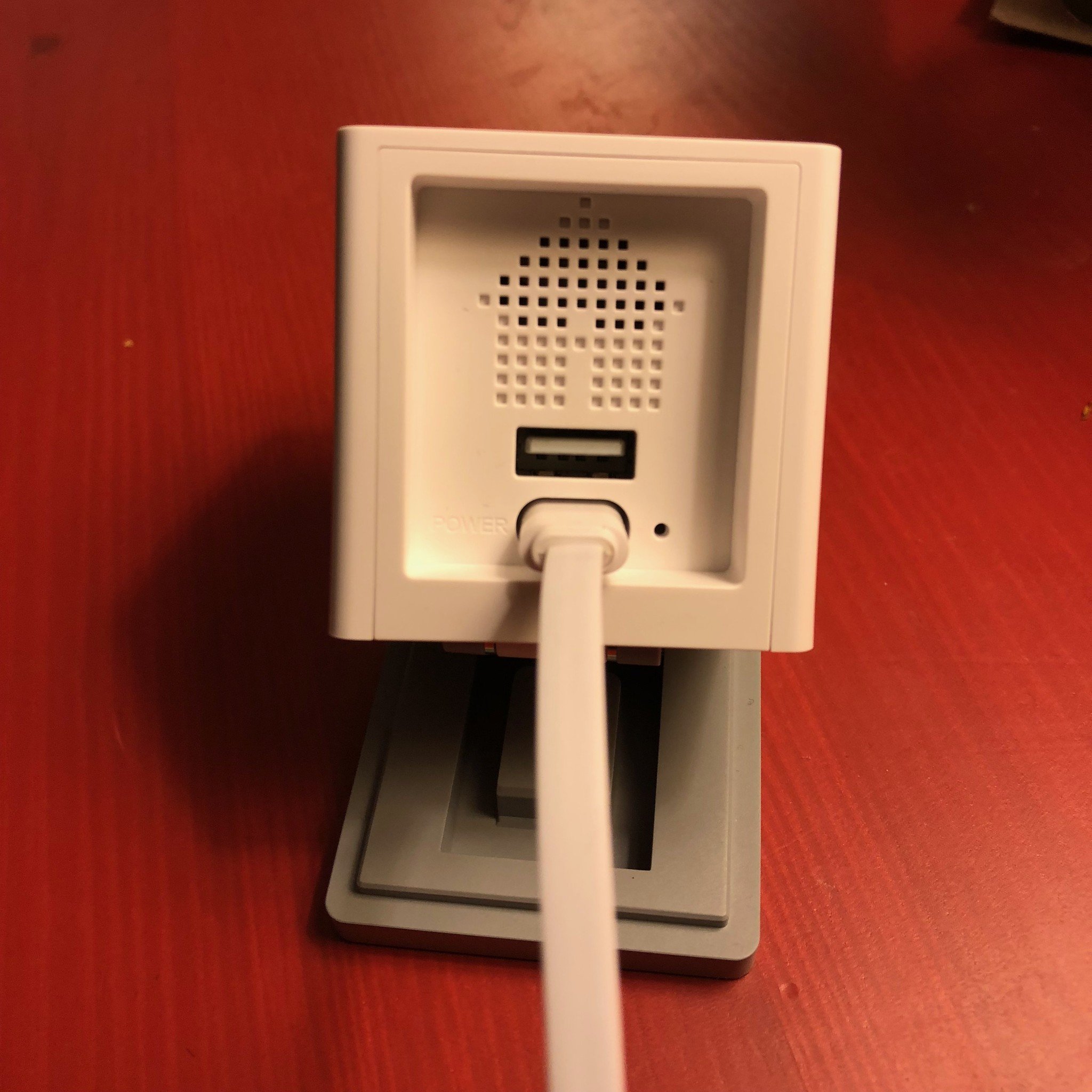
Also on the back of the unit: a slot to pop in an SD card, to which you can record as much video as said card can hold. (Once the card's full, WyzeCam will erase old video to record new footage.) Nest Cam doesn't support such direct recording.
Winner: Nest Cam
Both cameras give you what you pay for in exterior design. But as we'll see in other comparisons, WyzeCam's still "good enough" here, even if it's not fantastic.
Setup
I wasn't a fan of Nest Cam's long, convoluted setup, which requires you to scan a tiny QR code on the back of the camera with your phone or tablet and then wait while Nest's servers decide whether or not they feel like adding it to your network at the moment. The process worked, but it took a while and left me rolling my eyes often.
In contrast, plug WyzeCam in and press the tiny setup button hidden on the bottom, and the thing starts talking to you in a cheery prerecorded voice, guiding you through the short app-assisted setup process. Once it scans a QR code from your phone screen, the WyzeCam's ready in seconds. Even if the process doesn't work the first time – it threw an error once during two different setup processes – it's fast enough to easily repeat.
Winner: WyzeCam
Seriously, it talks to you.
Video
Though both cameras offer 1080p video and automatic night vision, Nest Cam has a wider field of view (130 degrees to WyzeCam's 110) and smoother frame rate (30fps vs. WyzeCam's 10fps).
Tested side by side in identical lighting, Nest Cam performed best in full light footage. WyzeCam's footage looked fine, but Nest Cam captured more of the room with richer colors, better color detail, and fewer blown-out highlights. In fairness to WyzeCam, I didn't really notice the difference until I had a chance to compare it directly to Nest Cam.
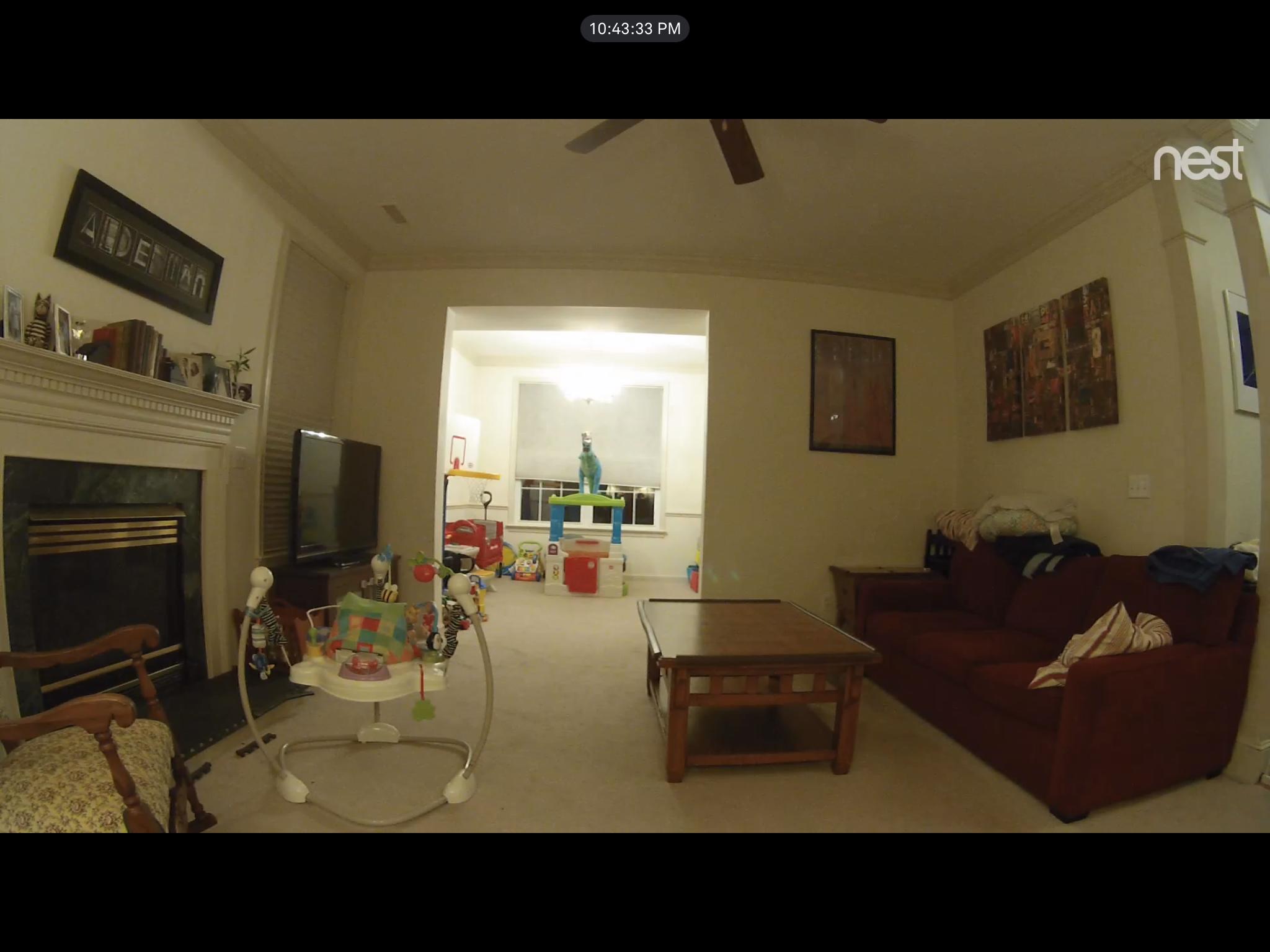
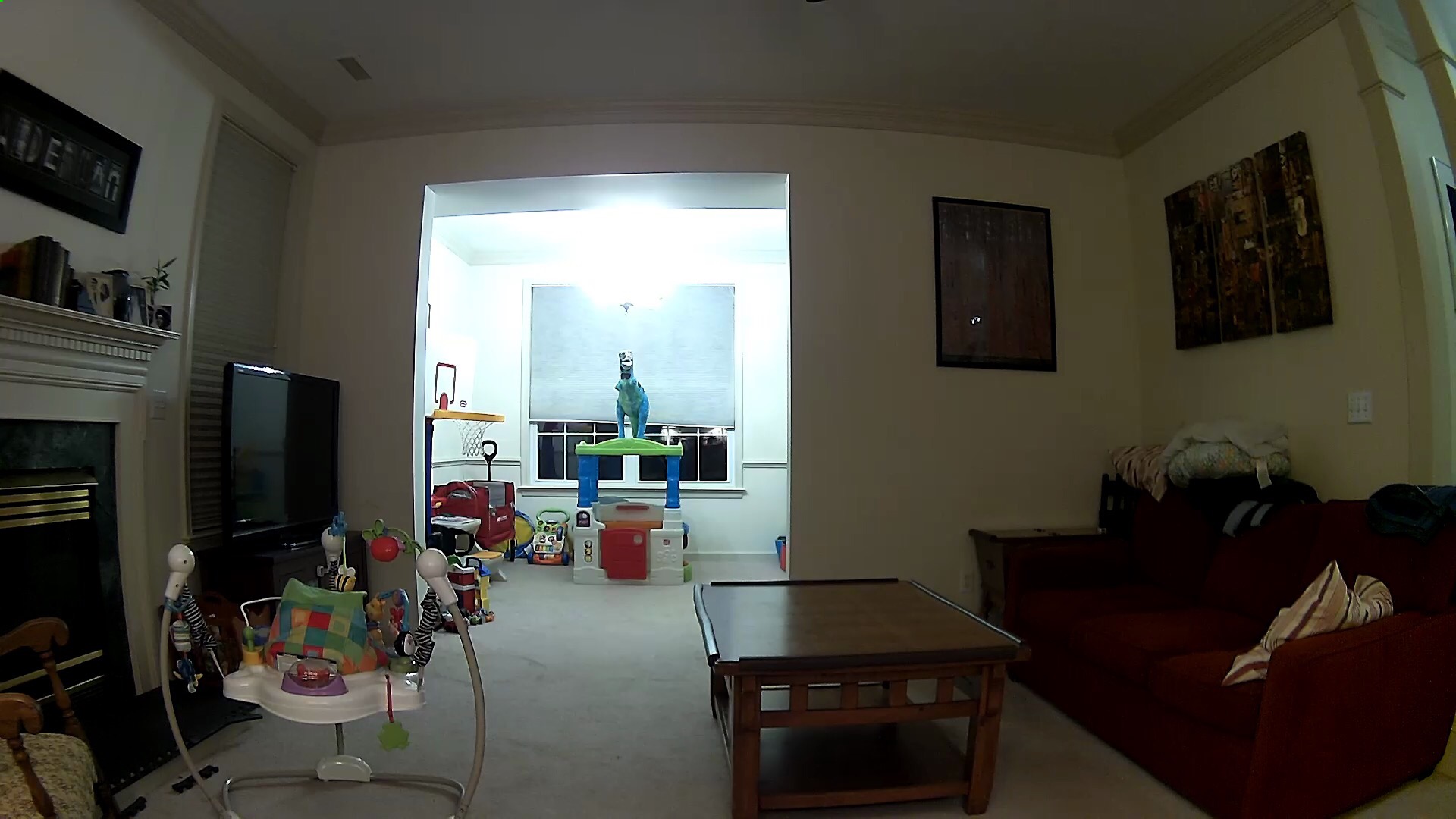
In night vision, artifacts plagued Nest Cam's footage, even in supposedly enhanced digital zoom mode. Zoomed in, my precious tot was a lumpy blur of jittery pixels.
WyzeCam's night vision footage looked much sharper, even zoomed in, with what appeared to be brighter and more powerful infrared lights. With a little effort I could discern the rising and falling of a tiny chest in gentle slumber.
This may owe to how each camera handles video; as far as I can tell, WyzeCam streams straight to any app on the same network, while Nest sends all video to its own servers before piping it all the way back to your app. I barely noticed the difference in frame rate between the cameras, nor any real quality gap between WyzeCam's SD and HD modes. (Both looked good.)
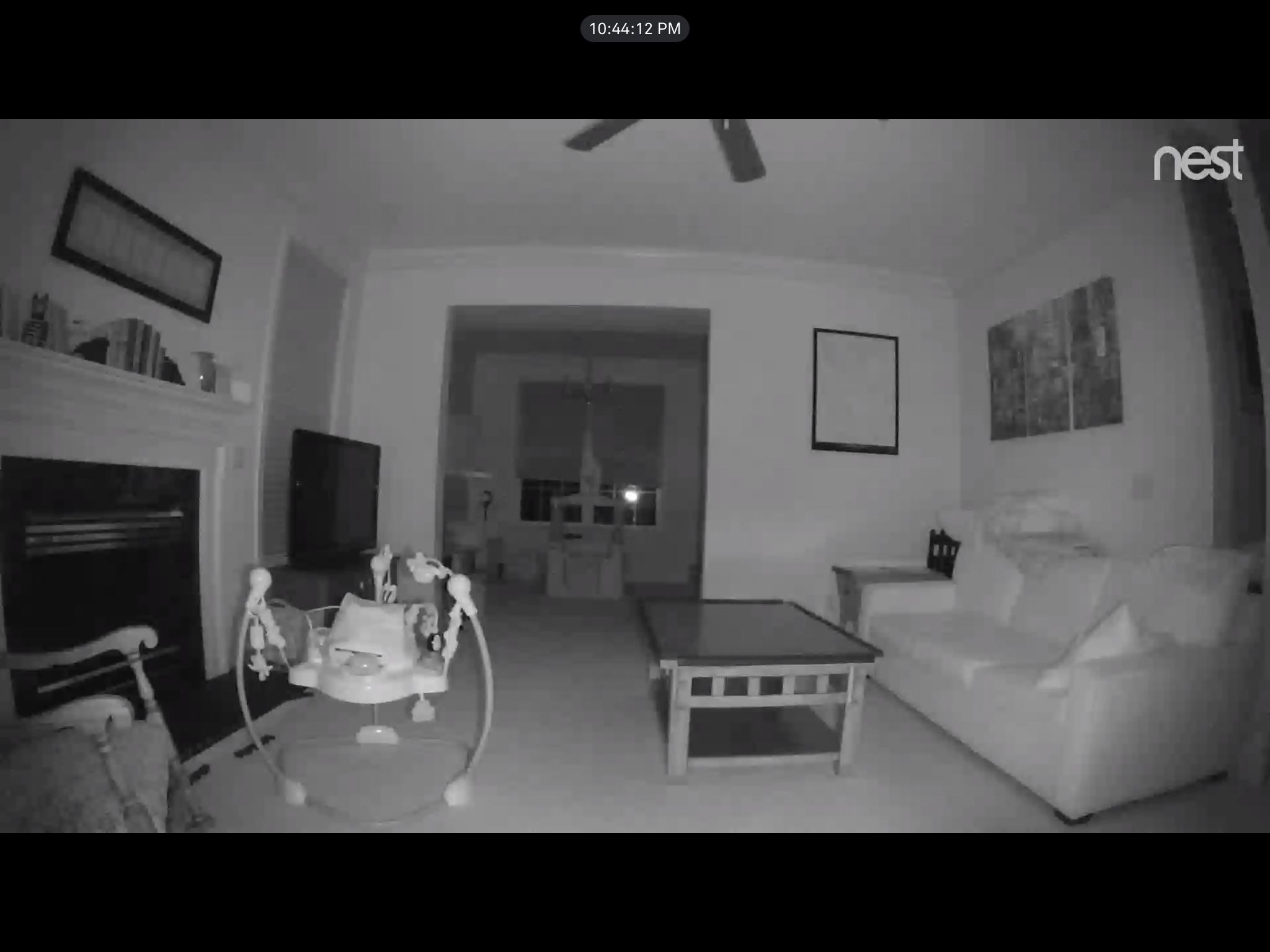
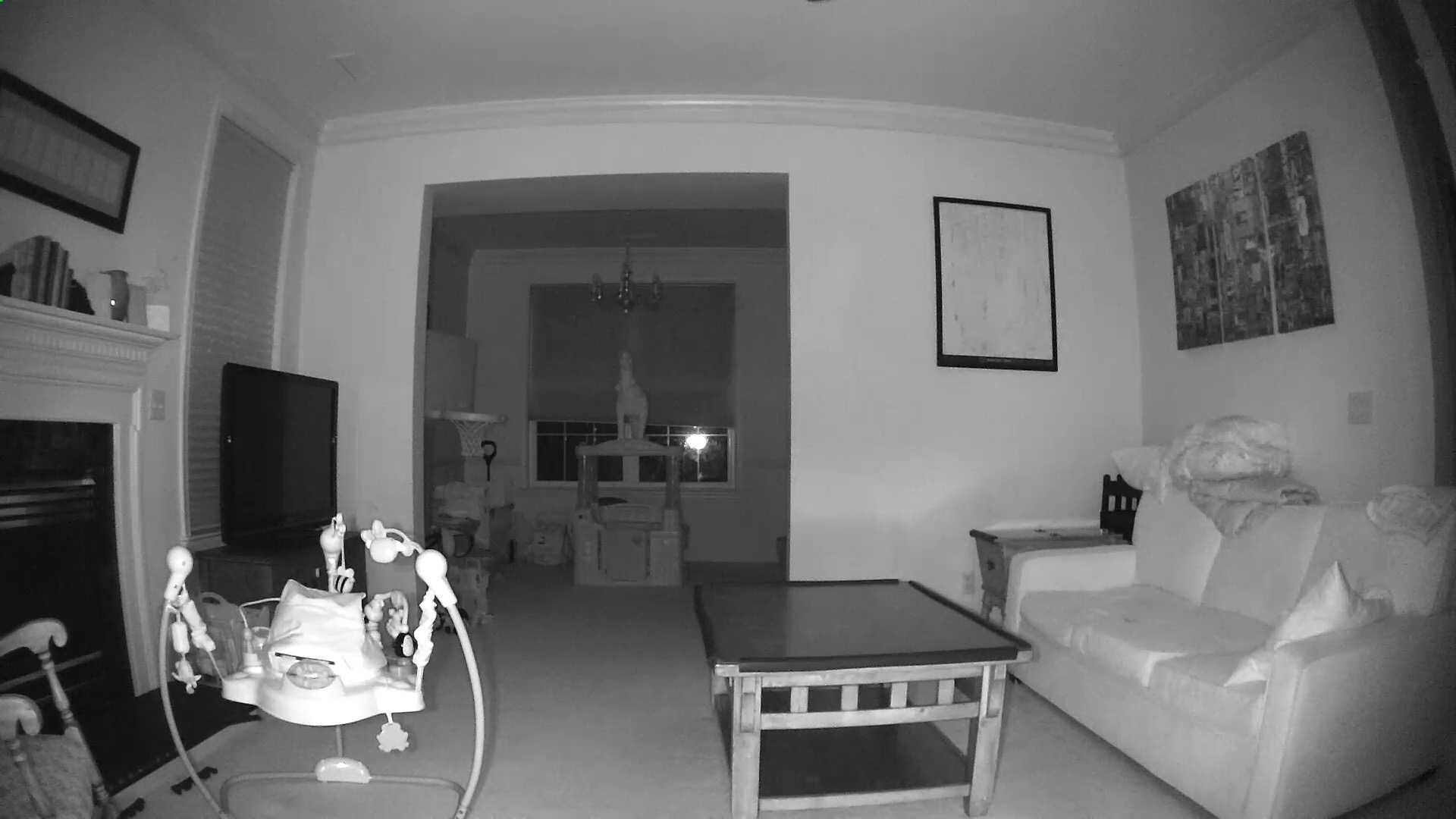
Nest Cam did show slightly better sensitivity when turning night vision on and off. In low-light situations, WyzeCam is prone to switch back and forth from regular to night vision mode, each time with a loud click, until you get annoyed and just set the mode manually in the app. Then again, Nest Cam took its sweet time turning night vision mode off, long after I'd turned on all the lights in a previously dark room.
Draw
WyzeCam's superior night vision video was hands down the biggest surprise in my testing. But Nest Cam may work better if you need the best possible daylight video for a security camera.
Audio
NestCam delivers clear, audible audio, with an adjustably sensitive mic that can pick up tiny rustles and mumbles. Speaking through the camera isn't a marvel of fidelity, but it sounds recognizably human and will probably not freak out pets or toddlers.
WyzeCam boasts of improved audio processing in the v2 camera, but you wouldn't know it. In both input and output, its audio is harsher and muddier than Nest Cam's. You'll be able to hear if your child talks in their sleep or cries for their parent of choice, but you probably won't be able to make out words precisely. And when you speak through the camera, it sounds metallic and walkie-talkie-ish.
WyzeCam also says it can detect the sound of smoke and carbon monoxide detectors, and alert you when it hears them. Apparently, no one told my WyzeCam or my smoke detector this. When I ran a test, the former quietly pretended not to know or hear the latter, and did nothing.
Winner: Nest Cam
WyzeCam is, again, good enough, but not nearly as good as Nest Cam.
Unsettling Orwellian-ness
Both Nest and Wyze say they securely encrypt the video they transmit. But as mentioned earlier, the Nest Cam sends every pixel of video through its own servers before it reaches your screen. As of September 2018, the WyzeCam has gained the ability to be turned on and off remotely – previously, it was always on no matter what, albeit streaming only over your local network – but still sends any alert videos it captures into the cloud via a series of third-party hosting providers. Previously, some of those companies were based outside the U.S.; in a Reddit thread, a Wyze engineer now says the company's using only U.S.-based companies to route U.S. traffic.
Draw
Wyze has improved here, but neither company can fully guarantee the security or privacy of your data.
App
Both apps reliably notified me of motion or sound. Sometimes a little too reliably. Be prepared to get a ton of notifications, although both apps let you adjust the sensitivity of motion and sound detection. Both let you set times of day when you will or won't receive notifications, and Nest's app can use its Home/Away function to automatically turn on the camera when you leave the house.
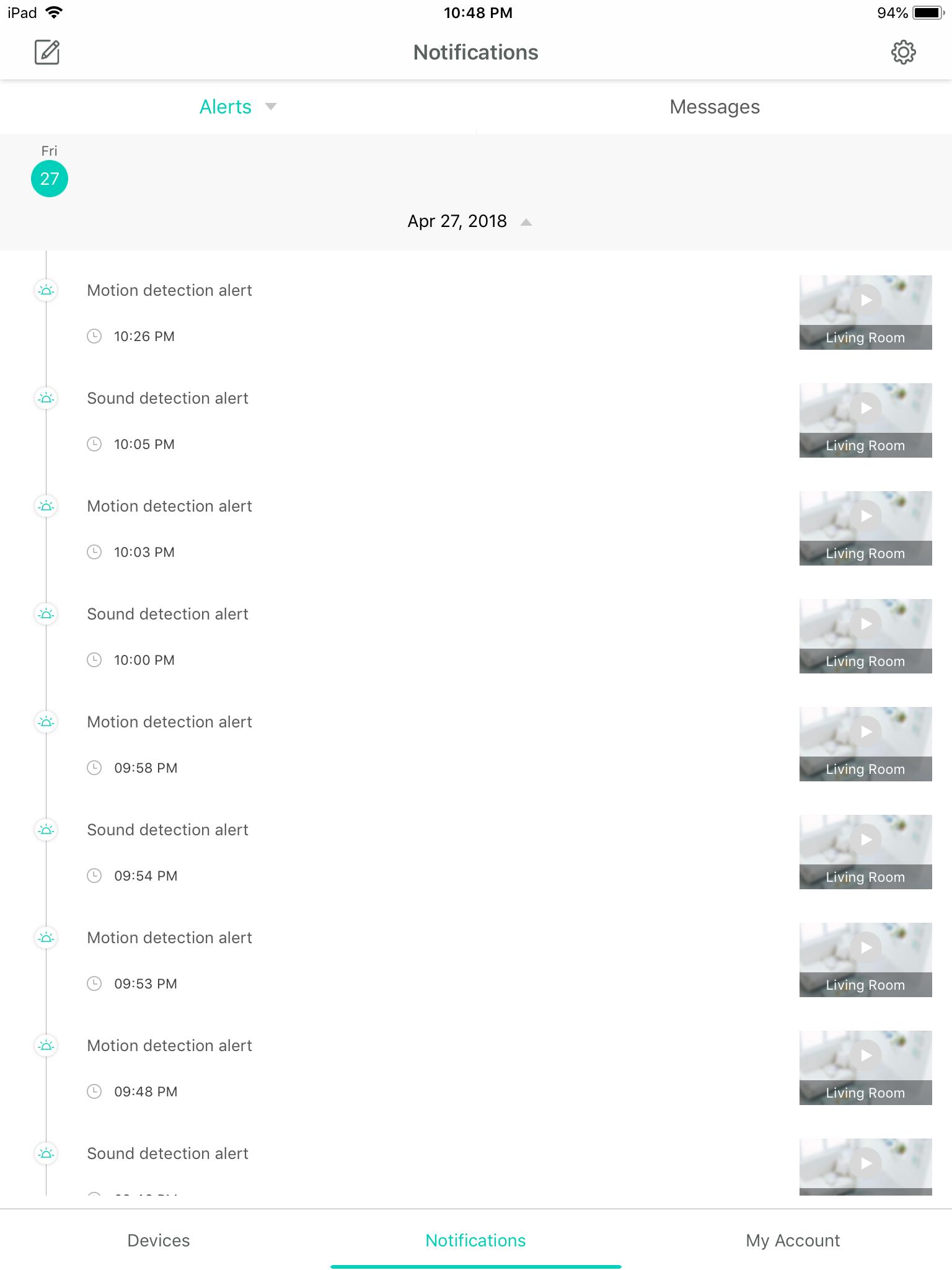
Nest's app supports multiple cameras and provides a live preview of each active camera's video feed. That comes in handy if you want to keep an eye on multiple offspring simultaneously. The Nest app and Nest Cam also integrate with Nest's other products, a variety of other connected home gadgets, and popular automation services such as IFTTT.
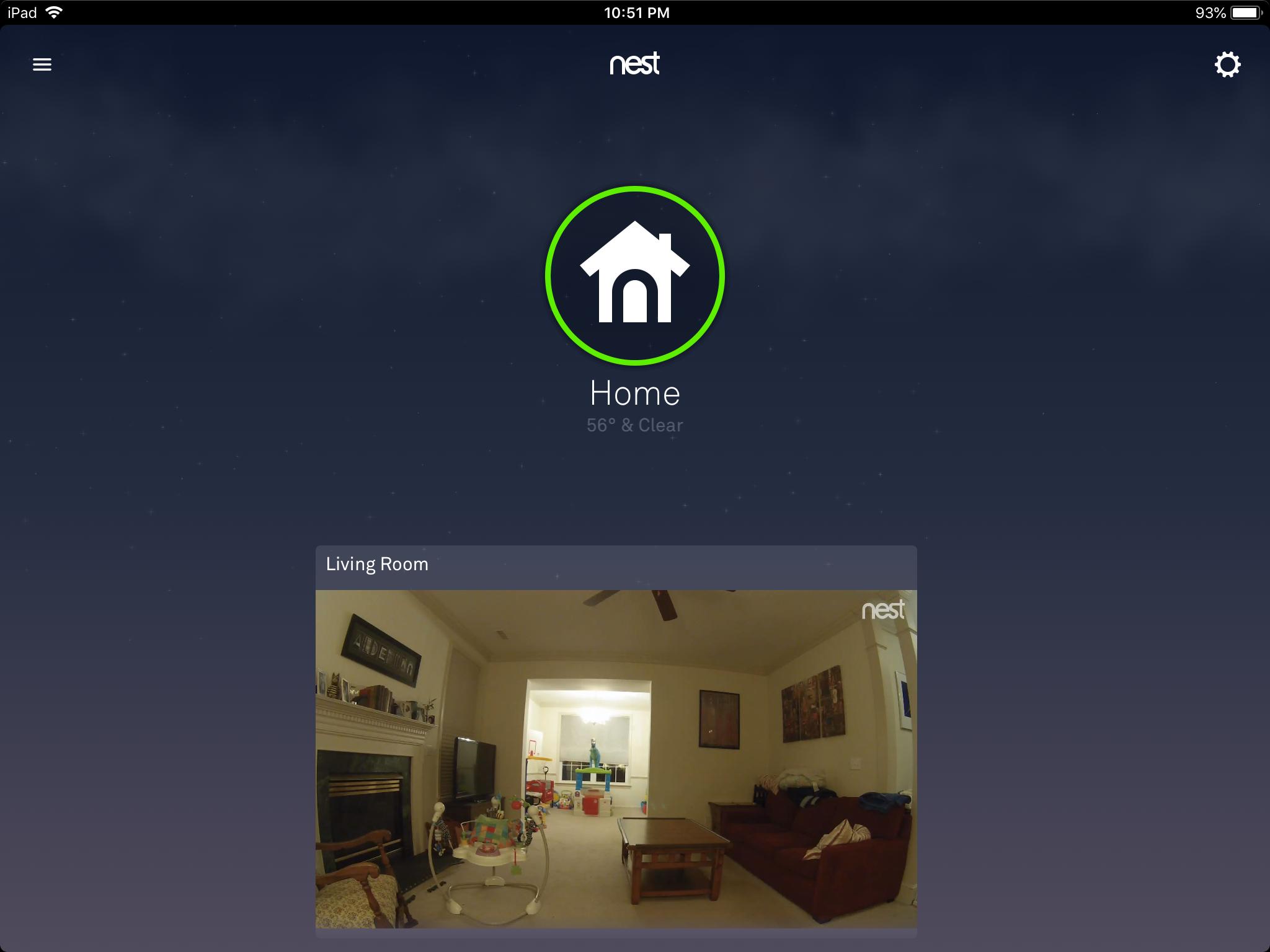
Nest's interface also integrates notifications with the video feed when you hold your phone or tablet vertically. You can filter by motion or sound, and scroll through a timeline of noted incidents without leaving the live feed. Without a subscription (see below), you'll only see image thumbnails, timestamps, and the duration of the noticed motion or sound.
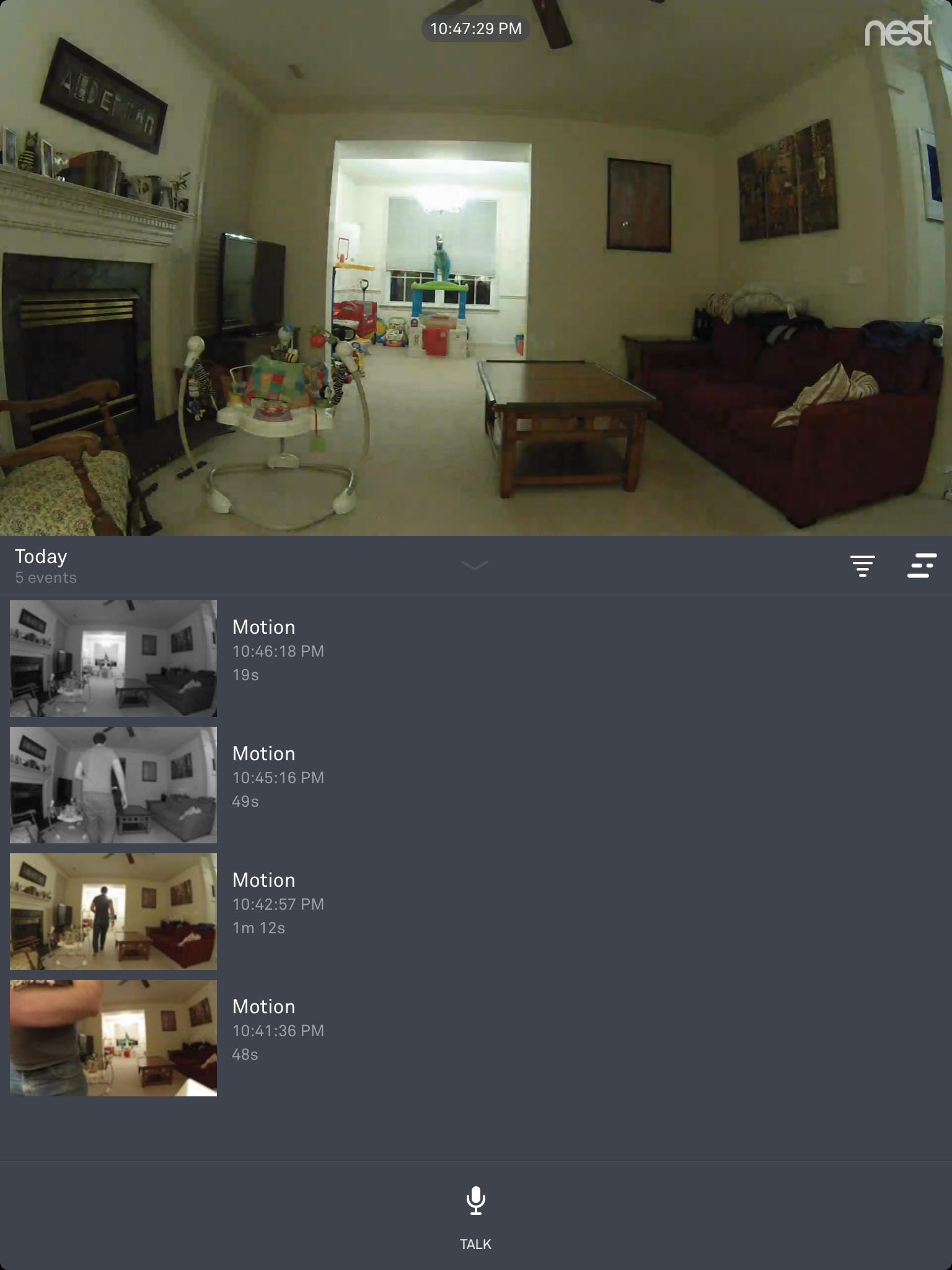
Despite these niceties, Nest's app never worked reliably with our Nest Cam. For weeks at a time, with no apparent reason, we'd struggle to turn the camera on through the app. We'd flip the switch, wait and wait and wait while different areas of the app told us the camera was either on or off, and then wander away and check back minutes later to find the camera on, or not.
Also, we could never seem to make it through an entire night with the camera on. Again and again, we'd wake up to "Nest has experienced an unknown error. Try again." Which is, you know, not great when you want to hear when your child has woken up.
Nest Cam's app can also run on desktop computers via Nest's web site, which can be convenient if your phone or tablet is out of juice or otherwise employed. WyzeCam only works with its iOS or Android apps.
WyzeCam's app supports as many cameras as you care to add, though it doesn't integrate with other smart devices or automation tools. There's no live preview; you get a still image from each camera that may or may not reflect what it saw the last time you checked it.
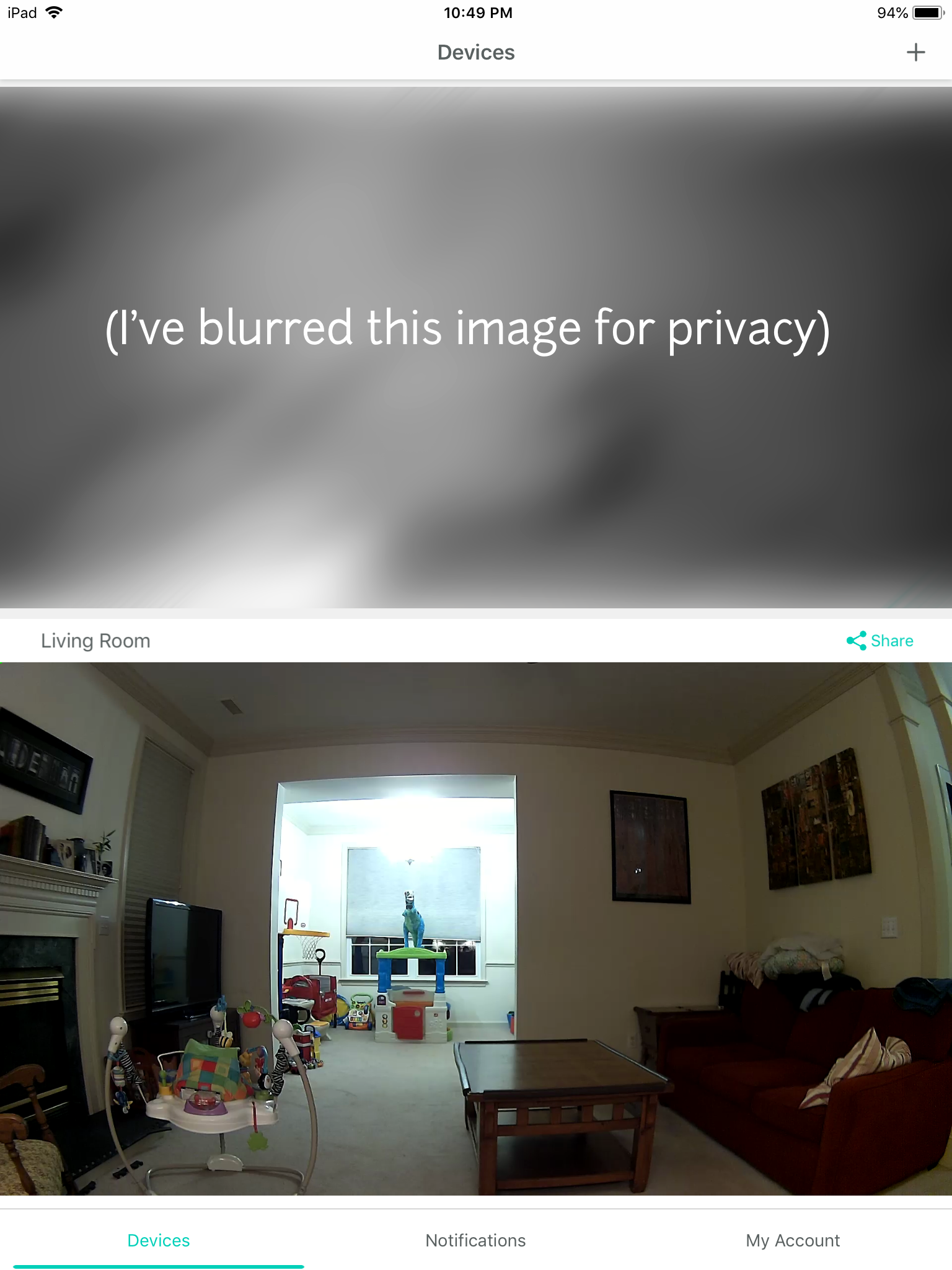
But the app connects to each camera in seconds, makes it easy to share any camera with other folks with a Wyze account, and runs firmware updates quickly and unobtrusively. The interface works well, with controls easily in reach. You can capture pictures and video directly to your phone or tablet (Nest can't) or to the SD card you've inserted in the camera (also a Nest no-no).
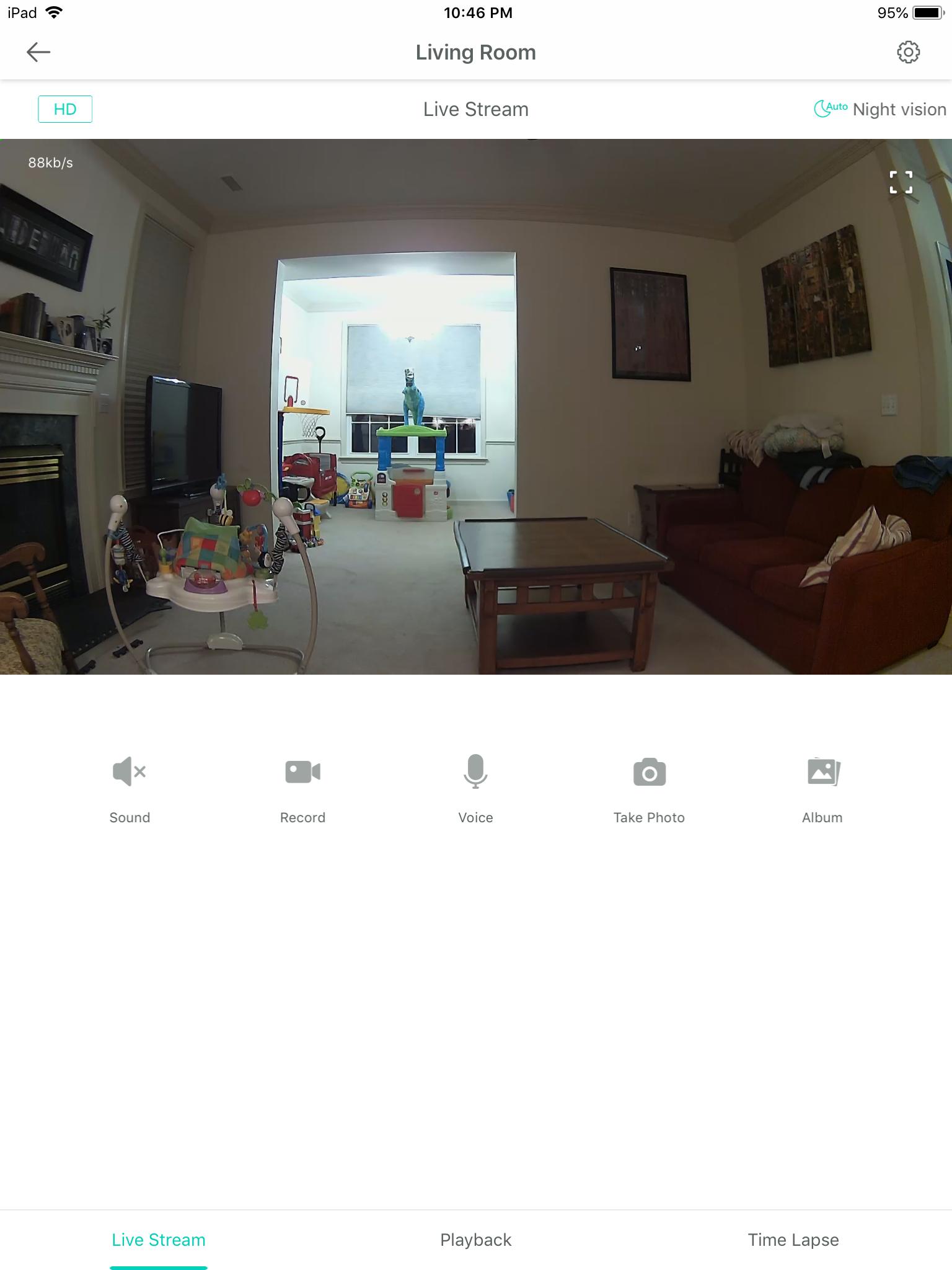
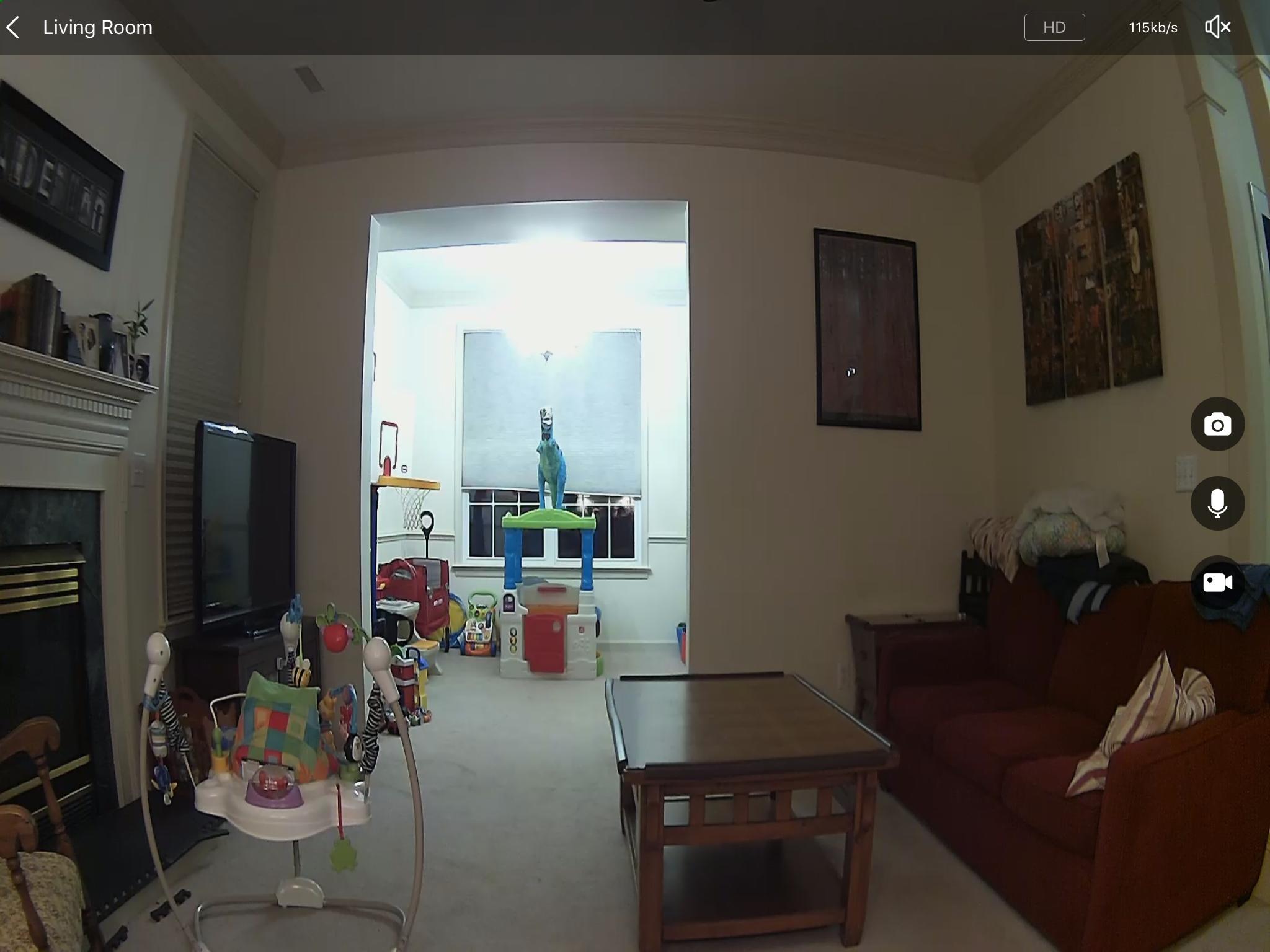
The Wyze app has a few rough edges. When trying to zoom in or out of a video feed, I'd occasionally somehow knock the video off the screen entirely. The app ignored the camera's aspect ratio to fill the screen in fullscreen mode, slightly distorting the video. And several bits of text suggested that Wyze's Chinese programmers didn't run them by an copy editor. But these quirks were easily remedied with little irritation. Only once did WyzeCam's video feed cut out overnight, and that might have owed to my iPad restarting for a software or app update.
Winner: WyzeCam
I prefer an unpolished app that consistently works over a polished one that doesn't. But if you need to connect to your tricked-out smart home, you'll definitely want the Nest Cam.
The "This Is How They Get You" Factor
The Nest Cam works well enough on its own, but you need a Nest Aware subscription to unlock its full potential. Subscribers can access days of complete archived video, designate particular zones in which to watch for motion, and distinguish between people and pets with facial recognition. Plans range from $5 a month or $50 a year for 5 days' rolling video backups to $30 a month or $300 a year for 30 days' worth. If you use Nest Cam Indoor as a security camera, as Nest now pitches it, a subscription might serve you well.
WyzeCam doesn't offer such frills. But it does give you 14 days' worth of rolling alert videos hosted on the Amazon Web Services cloud for free, in perpetuity. You don't need to pay to see the 12-second videos captured every time your camera detects motion or sound. And you can easily download those videos to your app to share with others. That might well be good enough for even your home security needs, with or without any video you record to an SD card.
Winner: WyzeCam
You don't have to pay extra — and keep paying — to get full use of its capabilities.
The overall victor: WyzeCam
Nest Cam is well-built and brimming with sophisticated tech, and if you want a dedicated security camera or another component of your smart home, it's a solid choice despite its higher price tag.
But most people won't need all those bells and whistles. The WyzeCam's preposterously low price and solid feature set make it a compelling alternative not just to the Nest Cam, but also to cameras in the $100-$150 range from Amazon and others.
Honestly? We bought two WyzeCams for under $50 with shipping, and replaced the Nest Cam entirely. When it comes to connected cameras, WyzeCam offers the best current value for your money.

Nathan Alderman is an iMore contributor. He’s been using Apple computers since his first Apple IIe in 1985, and writing professionally about Macs and their software since 2005. During his 12 years freelancing for Macworld, he covered email clients, web browsers, web design programs, writing apps, and games, and he’s continued to follow those interests at iMore since 2017. An editor and writing coach in his full-time career, he spends his dwindling spare time writing fiction for fun, volunteering for democracy, and contributing to podcasts on The Incomparable Network. Nathan adores his wife and wrangles his alarmingly large children in bucolic Crozet, VA.
